{"article":{"id":"2221762","title":"Planning the Northern Midlands and Mountains region helps proactively create development","description":"The Northern Midlands and Mountains region is a particularly important area in terms of politics, economy, society, national defense and security. Planning the Northern Midlands and Mountains region is important, helping to "open the way" and proactively create development.","contentObject":"
Planning is important
\nAt the second coordination conference of the Northern Midlands and Mountains region held on the afternoon of December 1, Minister of Planning and Investment Nguyen Chi Dung emphasized that the planning of the Northern Midlands and Mountains region for the period 2021-2030, with a vision to 2050, is of great significance, helping to "pave the way" and proactively create development, with new thinking and new vision to create new opportunities, new development momentum and new values for the region.
\nIn particular, the planning has focused on solving inter-sectoral, inter-regional and inter-provincial issues; reorganizing regional development space and effectively exploiting and promoting all resources for rapid and sustainable regional development. Regional planning is also an important basis for proposing a medium-term public investment plan for the period 2026-2030, especially large, inter-regional projects.
\nAccording to the Minister, the Northern Midlands and Mountains region is an area of special importance in terms of politics, economy, society, national defense and security, is the "fence" and northern gateway of the country and plays a decisive role in energy sources, water resources and ecological environment of the entire Northern region.
\nLocalities in the region have increasingly recognized the role, position, importance and exploited the potential and advantages of the region. In particular, the importance of socio-economic infrastructure, especially transport infrastructure, has been identified to focus on investment, helping to significantly improve the connection between provinces in the region with the whole country and internationally.
\nThe representative of the regional planning consultancy, EnCity International Consulting Joint Stock Company, has presented a number of general orientations in the planning work of the Northern Midlands and Mountains Region. In particular, the orientation of organizing development space includes 4 sub-regions - 6 economic corridors (4 main corridors, 2 secondary corridors) - 3 economic belts and a system of growth poles, centers associated with sub-regions and regions.
\nSpecifically, sub-region 1 (the western sub-region including Dien Bien, Son La and Hoa Binh): Is a green growth area associated with sustainable agriculture, eco-tourism and clean energy with Hoa Binh as the growth pole and Son La as the center of agricultural processing and social services.
\nSub-region 2 (Northwest sub-region including Lai Chau, Yen Bai , Phu Tho, Lao Cai, Tuyen Quang, Ha Giang): Is a large-scale tourist area, a hub for economic and cultural exchange with Yunnan and the southwestern provinces of China with two growth poles in Lao Cai and Phu Tho.
\nSub-region 3 (Northeast sub-region including Thai Nguyen, Bac Kan, Cao Bang): Is the industrial, educational and medical center of the whole region, and is also a place to preserve history and origins with the potential to develop origin tourism.
\nSub-region 4 (Eastern sub-region including Lang Son and Bac Giang): Is a place with great growth, the industrial center of the region, and has the most important international border gate with the role of connecting economic and cultural trade with Guangxi and the southern provinces of China.
\nRegarding the planning orientation for infrastructure development, the consulting unit said that before 2030, priority will be given to investing in the construction of the North-South expressway, opening more access to the sea. Accordingly, investing in the North-South expressway connecting Hoa Binh - Thanh Hoa; National Highway 16 connecting with Thanh Hoa, North Central Coast.
\nIn addition, priority will be given to upgrading and connecting Ring Road 1 (National Highway 4) and Ring Road 3 (National Highway 37) to speed up East-West connectivity, and upgrading and investing in Dien Bien, Lai Chau, Na San, and Sa Pa airports.
\nThe planning consultant also proposed investing in an additional high-speed route (80 km/h) connecting Hoa Binh to Ninh Binh, just over 40 km long, to increase connectivity with North-South routes.
\nMany proposals on transport infrastructure
\nCommenting on the planning, Mr. Trinh Viet Hung, Chairman of Thai Nguyen Provincial People's Committee, suggested that if the implementation is to be organized, when approving, it is necessary to consider railway lines, roads, infrastructure systems, especially electricity.
\nSharing the same view, Mr. Tran Huy Tuan, Chairman of Yen Bai Provincial People's Committee, said that to solve bottlenecks, infrastructure is a very big issue; in which horizontal connection is needed for regions.
\nMeanwhile, Mr. Ho Tien Thieu, Chairman of Lang Son Provincial People's Committee, said that the regional spatial connectivity organization plan mentioned the Chi Ma (Vietnam) - Ai Diem (China) border gate but did not raise the issue of upgrading it to an international border gate. However, the Prime Minister recently issued a decision on planning the border gates across the Vietnam - China land border, confirming that by 2030, 8 pairs of border gates will be upgraded to international border gates; including the Chi Ma - Ai Diem border gate. Therefore, the leader of Lang Son province proposed to supplement it correctly.
\nIn addition, Mr. Thieu assessed that the vertical traffic connection is stable, but the horizontal connection is not stable. Therefore, Lang Son proposed a connecting route from Lang Son at the Huu Nghi international border gate to Thai Nguyen, Tuyen Quang and from Tuyen Quang to Yen Bai and the above provinces.
\n“These cross-highways are very important because Thai Nguyen, Bac Kan, and Tuyen Quang can easily reach the border gate, closer to Lao Cai; so they should be included in the planning.
\nDeveloping the railway line, Lang Son has the Hanoi - Dong Dang railway line. This issue has been discussed a lot, if we delay investing in this line, we will miss the opportunity. Therefore, it is recommended to adjust the planning so that this railway line can be implemented before 2030", Mr. Thieu proposed.
\nNguyen Le
","displayType":1,"options":0,"category":{"name":"Investment","detailUrl":"/business/investment","wikiCategoryDetailUrl":"/ho-so/business/investment","relatedIds":["00000G","00000H","00000K","00000J"],"subIds":["000003","00000G","00000H","00000J","00000K","00000L","00004K"],"fullAv atarUrl":"","fullFacebookShareUrl":""},"displayTypeToInt":1,"detailUrl":"/quy-hoach-vung-trung-du-va-mien-nui-phia-bac-giup-chu-dong-kien-tao-phat-trien-2221762.html","fullAvatarUrl":"https://static-images.vnncdn.net/files/publish/2023/12/1/quy-hoach-vung-trung-du-va-mien-nui-phia-bac-giup-chu-dong-kien-tao-phat-trien-1247.jpg","fullAvatarFbUrl":"https://static-images.vnncdn.net/files/publish/2023/12/1/quy-hoach-vung-trung-du-va-mien-nu i-phia-bac-giup-chu-dong-kien-tao-phat-trien-1154.jpg","updatedDate":"2023-12-01T18:59:00","isHiddenDescription":"","publishDateDisplay":"01/12/2023","hasCover":false},"articlesSameCategory":[{"id":"2221718","title":"Vietnam is ready to attract foreign investment","description":"Prime Minister Pham Minh Chinh affirmed that Vietnam is "ready to attract foreign investors.","displayType":1,"category":{"name":"Investment investment","detailUrl":"/business/investment","wikiCategoryDetailUrl":"/ho-so/business/investment","relatedIds":["00000G","00000H","00000K","00000J"],"subIds":["000003","00000G","00000H","00000J","00000K","00000L","00004K"],"fullAvatarUrl":"","fullFacebookShareUrl":""},"displayTypeToInt":1,"detailUrl":"https://vietnamnet.vn/viet-nam-san-sang-thu-hut-von-dau -tu-nuoc-ngoai-2221718.html","fullAvatarUrl":"https://static-images.vnncdn.net/files/publish/2023/12/1/viet-nam-san-sang-thu-hut-von-dau-tu-nuoc-ngoai-1157.jpg","isFee":false ,"priority":0,"zoneId":"","publishDate":"2023-12-01T18:13:45","option":0,"avatarIconPos ition":0,"updatedDate":"0001-01-01T00:00:00","isPin":false},{"id":"2221576","title":"Area Coastal economy becomes the pillar of local development","description":"Many coastal economic zones have truly become pillars and have made great contributions to local economic development such as Nghi Son, Dinh Vu - Cat Hai, Vung Ang, Chu Lai, Dung Quat, Phu Quoc.","displayType":1,"category":{"name":"Head investment","detailUrl":"/kinh-doanh/dau-tu","wikiCategoryDetailUrl":"/ho-so/kinh-doanh/dau-tu","relatedIds":["00000G","00000H","00000K","00000J"],"subIds":["000003","00000G","00000H","00000J","00000K","00000L","00004K"],"fullAvatarUrl":"","fullFacebookShareUrl":""},"displayTypeToInt":1,"detailUrl":"https://vietnamnet.vn/khu-kinh-te-ven-bien-tro-thanh-tru-cot-phat-trien-cua- cac-dia-phuong-2221576.html","fullAvatarUrl":"https://static-images.vnncdn.net/files/publish/2023/12/1/khu- Kinh-te-ven-bien-tro-thanh-tru-cot-phat-trien-cua-cac-dia-phuong-770.jpg","isF ee":false,"priority":0,"zoneId":"","publishDate":"2023-12-01T14:14:11","option":0,"avatarIco nPosition":0,"updatedDate":"0001-01-01T00:00:00","isPin":false},{"id":"2221077","title":"Sutra "The marine economy helps Quang Nam and Quang Ngai develop sustainably.","description":"Quang Nam and Quang Ngai are promoting the development of the marine economy. This is considered the right path, helping the economies of these two provinces develop in the right direction.","displayType":1,"category":{"name":"Head investment","detailUrl":"/kinh-doanh/dau-tu","wikiCategoryDetailUrl":"/ho-so/kinh-doanh/dau-tu","relatedIds":["00000G","00000H","00000K","00000J"],"subIds":["000003","00000G","00000H","00000J","00000K","00000L","00004K"],"fullAvatarUrl":"","fullFacebookShareUrl":""},"displayTypeToInt":1,"detailUrl":"https://vietnamnet.vn/kinh-te-bien-giup-quang-nam-quang-ngai-phat- trien-ben-vung-2221077.html","fullAvatarUrl":"https://static-images.vnncdn.net/files/publish/2023/12/1/kinh-te-bien-giup-quang-nam-quang-ngai-phat-trien-ben-vung-132.jpg","isFee":false,"priority":0,"zoneId":"","publishDate":"2023-12-01T06:32:47","option":0,"avatarIconPosition":0,"updatedDate":"0001-01-01T00:00:00","isPin":false},{"id":"2221318","title":"Economic news November 30: 'Adjusting' credit room; New investors in Bau Duc's company","description":"State Bank adjusts credit growth targets among banks; Hoang Anh Gia Lai has a new investor; FLC's infamous VND2,300 billion project in Thanh Hoa is revoked... are notable economic news of the day.","displayType":1,"category":{"name":"Head investment","detailUrl":"/kinh-doanh/dau-tu","wikiCategoryDetailUrl":"/ho-so/kinh-doanh/dau-tu","relatedIds":["00000G","00000H","00000K","00000J"],"subIds":["000003","00000G","00000H","00000J","00000K","00000L","00004K"],"fullAvatarUrl":"","fullFacebookShareUrl":""},"displayTypeToInt":1,"detailUrl":"https://vietnamnet.vn/ban-tin-kinh-te-30-11-noi-room-tin-dung-nha-dau-tu-moi-vao-co ng-ty-bau-duc-2221318.html","fullAvatarUrl":"https://static-images.vnncdn.net/files/publish/2023/11/30/ban-tin- Kinh-te-3011-chinh-room-tin-dung-nha-dau-tu-moi-vao-cong-ty-bau-duc-1356.jpg" ,"isFee":false,"priority":0,"zoneId":"","publishDate":"2023-11-30T19:39:55","option":0,"avatar IconPosition":0,"updatedDate":"0001-01-01T00:00:00","isPin":false},{"id":"2221276","title":"Home "Familiar investors won the bid for the Quang Tri Airport project worth nearly 6,000 billion VND","description":"T&T Transport Infrastructure Investment and Development Company Limited and CIENCO4 Group Joint Stock Company are the two contractors that have just signed a decision approving the construction of Quang Tri Airport.","displayType":1,"category":{"name":"Investor investment","detailUrl":"/business/investment","wikiCategoryDetailUrl":"/ho-so/business/investment","relatedIds":["00000G","00000H","00000K","00000J"],"subIds":["000003","00000G","00000H","00000J","00000K","00000L","00004K"],"fullAvatarUrl":"","fullFacebookShareUrl":""},"displayTypeToInt":1,"detailUrl":"https://vietnamnet.vn/nha-dau-tu-quen-mat-trung-thau-du-an-san-bay-quang-tri -gan-6-000-ty-2221276.html","fullAvatarUrl":"https://static-images.vnncdn.net/files/publish/2023/11/30/nha-dau-tu-quen-mat-trung-thau-du-an-san-bay-quang-tri-gan-6000-ty-1353.jpg","isF ee":false,"priority":0,"zoneId":"","publishDate":"2023-11-30T19:34:21","option":0,"avatarIco nPosition":0,"updatedDate":"0001-01-01T00:00:00","isPin":false},{"id":"2221196","title":"Increase Green growth is the key to sustainable development","description":"Green growth towards economic prosperity, environmental sustainability and social equity is not only an inevitable choice, but also an opportunity for Vietnam to become a pioneering country in the region.","displayType":1,"category":{"name":"Head investment","detailUrl":"/business/investment","wikiCategoryDetailUrl":"/ho-so/business/investment","relatedIds":["00000G","00000H","00000K","00000J"],"subIds":["000003","00000G","00000H","00000J","00000K","00000L","00004K"],"fullAvatarUrl":"","fullFacebookShareUrl":""},"displayTypeToInt":1,"detailUrl":"https://vietnamnet.vn/tang-truong-xanh-la-chia-khoa-de-phat- trien-ben-vung-2221196.html","fullAvatarUrl":"https://static-images.vnncdn.net/files/publish/2023/11/30/tang-truong-xanh-la-chia-khoa-de-phat-trien-ben-vung-1166.jpg","isFee":fa lse,"priority":0,"zoneId":"","publishDate":"2023-11-30T17:57:25","option":0,"avatarIconP osition":0,"updatedDate":"0001-01-01T00:00:00","isPin":false},{"id":"2221263","title":"Because Why is Khe Sanh Wind Power negotiating a shareholding structure with a foreign investor?,"description":"The investor of Khe Sanh Wind Power project (Huong Hoa, Quang Tri) is negotiating and planning to restructure shares with a Hong Kong investor to cooperate in management and operation to optimize the efficiency and longevity of the project.","displayType":1,"category":{"name":"Investor investment","detailUrl":"/kinh-doanh/dau-tu","wikiCategoryDetailUrl":"/ho-so/kinh-doanh/dau-tu","relatedIds":["00000G","00000H","00000K","00000J"],"subIds":["000003","00000G","00000H","00000J","00000K","00000L","00004K"],"fullAvatarUrl":"","fullFacebookShareUrl":""},"displayTypeToInt":1,"detailUrl":"https://vietnamnet.vn/vi-sao-dien-gio-khe-sanh-dam-phan-co-cau-co-phan-voi-nha- dau-tu-ngoai-2221263.html","fullAvatarUrl":"https://static-images.vnncdn.net/files/publish/2023/11/30/vi-sao-dien-gio-khe-sanh-dam-phan-co-cau-co-phan-voi-nha-dau-tu-ngoai-1105.jpg","isF ee":false,"priority":0,"zoneId":"","publishDate":"2023-11-30T17:18:00","option":0,"avatarIcon Position":0,"updatedDate":"0001-01-01T00:00:00","isPin":false},{"id":"2221100","title":"Advertisement Ninh firmly holds the top position in attracting FDI","description":"In the first 11 months of 2023, the foreign investment situation in Vietnam continued to be vibrant. Topping the rankings with nearly 3.11 billion USD in registered investment capital, Quang Ninh is a "bright star" and a strong driving force behind the multidimensional development of Vietnam's economy.","displayType":1,"category":{"name":"Head investment","detailUrl":"/business/investment","wikiCategoryDetailUrl":"/ho-so/business/investment","relatedIds":["00000G","00000H","00000K","00000J"],"subIds":["000003","00000G","00000H","00000J","00000K","00000L","00004K"],"fullAvatarUrl":"","fullFacebookShareUrl":""},"displayTypeToInt":1,"detailUrl":"https://vietnamnet.vn/quang-ninh-vung-vang-vi-tri-quan-qu an-thu-hut-fdi-2221100.html","fullAvatarUrl":"https://static-images.vnncdn.net/files/publish/2023/11/30/quang-ninh-vung-vang-vi-tri-quan-quan-thu-hut-fdi-697.jpeg","isFee":fal se,"priority":0,"zoneId":"","publishDate":"2023-11-30T11:39:00","option":4,"avatarIconPo site":0,"updatedDate":"0001-01-01T00:00:00","isPin":false},{"id":"2220962","title":"Reason because a wind power project wants to transfer shares to a Hong Kong partner","description":"Khe Sanh wind power project (Huong Hoa, Quang Tri) is negotiating and planning to transfer part of its shares to a Hong Kong (China) investor to cooperate in management and operation to optimize the efficiency and longevity of the project.","displayType":1,"category":{"name":"Investment investment","detailUrl":"/kinh-doanh/dau-tu","wikiCategoryDetailUrl":"/ho-so/kinh-doanh/dau-tu","relatedIds":["00000G","00000H","00000K","00000J"],"subIds":["000003","00000G","00000H","00000J","00000K","00000L","00004K"],"fullAvatarUrl":"","fullFacebookShareUrl":""},"displayTypeToInt":1,"detailUrl":"https://vietnamnet.vn/ly-do-mot-du-an-dien-gio-muon-nhuong-co-phan-cho-d oi-tac-hong-kong-2220962.html","fullAvatarUrl":"https://static-images.vnncdn.net/files/publish/2023/11/30/ly-do-du-an-dien-gio-muon-nhuong-co-phan-cho-doi-tac-hong-kong-304.jpg","isFee":false,"priority":0,"zoneId":"","publishDate":"2023-11-30T09:00:00","option":0,"avatarIconPosition":0,"updatedDate":"0001-01-01T00:00:00","isPin":false},{"id":"2220854","title":"Economic news November 29: Applying global minimum tax; VAT reduction until June 30, 2024","description":"Vietnam officially applies global minimum tax from January 1, 2024; National Assembly agrees to reduce VAT by 2% until mid-2024; National Assembly Chairman gives reasons for not yet passing the Land Law; Consumer Price Index in November increases... are notable economic news of the day.","displayType":1,"category":{"name":"Head investment","detailUrl":"/kinh-doanh/dau-tu","wikiCategoryDetailUrl":"/ho-so/kinh-doanh/dau-tu","relatedIds":["00000G","00000H","00000K","00000J"],"subIds":["000003","00000G","00000H","00000J","00000K","00000L","00004K"],"fullAvatarUrl":"","fullFacebookShareUrl":""},"displayTypeToInt":1,"detailUrl":"https://vietnamnet.vn/ban-tin-kinh-te-29-11-ap-thue-toi-thieu-toan-cau-giam-thue-vat -toi-30-6-2024-2220854.html","fullAvatarUrl":"https://static-images.vnncdn.net/files/publish/2 023/11/29/ban-tin- Kinh-te-2911-ap-thue-toi-thieu-toan-cau-giam-thue-vat-toi-3062024-1331.jpg"," isFee":false,"priority":0,"zoneId":"","publishDate":"2023-11-29T19:40:48","option":0,"avatarIc onPosition":0,"updatedDate":"0001-01-01T00:00:00","isPin":false},{"id":"2220566","title":"Success "The Ministry of Home Affairs has just decided to allow the establishment of the Vietnam Rice Industry Association.","displayType":1,"category":{"name":"First investment","detailUrl":"/business/investment","wikiCategoryDetailUrl":"/ho-so/business/investment","relatedIds":["00000G","00000H","00000K","00000J"],"subIds":["000003","00000G","00000H","00000J","00000K","00000L","00004K"],"fullAvatarUrl":"","fullFacebookShareUrl":""},"displayTypeToInt":1,"detailUrl":"https://vietnamnet.vn/thanh-lap-hiep-hoi-nganh-hang-lua -gao-viet-nam-2220566.html","fullAvatarUrl":"https://static-images.vnncdn.net/files/publish/2023/11/29/thanh-lap-hiep-hoi-nganh-hang-lua-gao-viet-nam-448.jpg","isFee":false," priority":0,"zoneId":"","publishDate":"2023-11-29T09:53:13","option":0,"avatarIconPosition":0,"updatedDate":"0001-01-01T00:00:00","isPin":false},{"id":"2221025","title":"Advertisement Quang Ninh supports businesses to 'go out to sea' through e-commerce","description":"Quang Ninh province has actively organized many training programs, conferences, and seminars to share mechanisms and policies for border economic development... to support businesses with skills and knowledge to participate in cross-border e-commerce activities.","displayType":1,"category":{"name":"Head investment","detailUrl":"/business/investment","wikiCategoryDetailUrl":"/ho-so/business/investment","relatedIds":["00000G","00000H","00000K","00000J"],"subIds":["000003","00000G","00000H","00000J","00000K","00000L","00004K"],"fullAvatarUrl":"","fullFacebookShareUrl":""},"displayTypeToInt":1,"detailUrl":"https://vietnamnet.vn/quang-ninh-ho-tro-doanh-nghiep-ra-bien-lon-qua-thuon g-mai-dien-tu-2221025.html","fullAvatarUrl":"https://static-images.vnncdn.net/files/publish/2023/11/30/quang-ninh-ho-tro-doanh-nghiep-ra-bien-lon-qua-thuong-mai-dien-tu-411.jpg","isFee ":false,"priority":0,"zoneId":"","publishDate":"2023-11-29T09:34:00","option":4,"avatarIconP osition":0,"updatedDate":"0001-01-01T00:00:00","isPin":false},{"id":"2220450","title":"These Impressive figures in Vietnam - Japan economic cooperation","description":"On September 21, 1973, Vietnam and Japan established diplomatic relations in a signing ceremony in Paris, France. Over the past 50 years, the two countries have become important economic partners of each other. Of which, Japan provides the largest loan capital to Vietnam.","displayType":8,"category":{"name":"Head investment","detailUrl":"/business/investment","wikiCategoryDetailUrl":"/ho-so/business/investment","relatedIds":["00000G","00000H","00000K","00000J"],"subIds":["000003","00000G","00000H","00000J","00000K","00000L","00004K" ],"fullAvatarUrl":"","fullFacebookShareUrl":""},"displayTypeToInt":8,"detailUrl":"https://vietnamnet.vn/nhung-con-so-an-tuong-trong-hop-tac-kinh-te-viet-nam-nhat-ban-2220450.html","fullAvatarUrl":"https://static-images.vnncdn.net/files/publish/2023/11/28/quan-he-kinh-te-viet-nam-nhat-ban-nhung-dau-moc-tren-chang-duong-lich-su-1475.png","isFee":false,"priority":0,"zoneId":"","publishDate":"2023-11-29T06:15:00","option":65 536,"avatarIconUrl":"https://static-images.vnncdn.net/files/2023/4/8/infographic.svg","avatarIconPosition":5,"updatedDate":"0001-01-01T00:00:00","isPin":false,"avatarIconId":"00000R"},{"id":"2220301","title":"Central provinces urgently remove IUU 'yellow card'","description":"Vietnam's 'yellow card' warning for exploited aquatic products has caused a lot of economic damage. To remove the IUU 'yellow card', many Central provinces have taken urgent solutions.","displayType":1,"category":{"name":"Head investment","detailUrl":"/business/investment","wikiCategoryDetailUrl":"/ho-so/business/investment","relatedIds":["00000G","00000H","00000K","00000J"],"subIds":["000003","00000G","00000H","00000J","00000K","00000L","00004K"],"fullAvatarUrl":"","fullFacebookShareUrl":""},"displayTypeToInt":1,"detailUrl":"https://vietnamnet.vn/cac-tinh-mien-trung-rao-riet-go -the-vang-iuu-2220301.html","fullAvatarUrl":"https://static-images.vnncdn.net/files/publish/2023/11/28/cac-tinh-mien-trung-rao-riet-go-the-vang-iuu-1356.jpg","isFee":false,"priority":0,"zoneId":"","publishDate":"2023-11-28T20:09:00","option":0,"avatarIconPosition":0,"updatedDate":"0001-01-01T00:00:00","isPin":false},{"id":"2220427","title":"Economic news November 28: Maximum deposit 5% of selling price; Real estate Tet bonus at record low","description":"Real estate project investors are only allowed to collect deposits of no more than 5% of the selling price; real estate businesses give unprecedentedly low Tet bonuses; foreign investment attraction increases... are the economic news to pay attention to today.","displayType":1,"category":{"name":"Head investment","detailUrl":"/kinh-doanh/dau-tu","wikiCategoryDetailUrl":"/ho-so/kinh-doanh/dau-tu","relatedIds":["00000G","00000H","00000K","00000J"],"subIds":["000003","00000G","00000H","00000J","00000K","00000L","00004K"],"fullAvatarUrl":"","fullFacebookShareUrl":""},"displayTypeToInt":1,"detailUrl":"https://vietnamnet.vn/ban-tin-kinh-te-28-11-tien-coc-toi-da-5-gia-ban-bds-thuong-t et-thap-ky-luc-2220427.html","fullAvatarUrl":"https://static-images.vnncdn.net/files/publish/2023/11/28/ban-tin- Kinh-te-2811-tien-coc-toi-da-5-gia-ban-bds-thuong-tet-thap-ky-luc-1299.jpg", "isFee":false,"priority":0,"zoneId":"","publishDate":"2023-11-28T19:22:30","option":0,"avatarI conPosition":0,"updatedDate":"0001-01-01T00:00:00","isPin":false},{"id":"2220365","title":"Male Nam Dinh's GRDP in 2023 is expected to increase by 10.19% compared to 2022, which is also the first time the province's GRDP has achieved double-digit growth. ","displayType":1,"category":{"name":"Kinh doanh","detailUrl":"/kinh-doanh","wikiCategoryDetailUrl":"/ho-so/kinh-doanh","relatedIds":["00000G","00000H","00000K","00000J"],"subIds":["000003","00000G","00000H","00000J","00000K","00000L","00004K"],"fullAvatarUrl":"","fullFacebookShareUrl":""},"displayTypeToInt":1,"detailUrl":"https://vietnamnet.vn/nam-dinh-dat-muc-tang-truong -lich-su-2220365.html","fullAvatarUrl":"https://static-images.vnncdn.net/files/publish/2023/11/28/nam-dinh-dat-muc-tang-truong-lich-su-1195.jpeg","isFee":false,"prior ity":0,"zoneId":"","publishDate":"2023-11-28T17:59:00","option":0,"avatarIconPositi on":0,"updatedDate":"0001-01-01T00:00:00","isPin":false},{"id":"2220367","title":"11 month, foreign investment attraction increased by nearly 15%","description":"According to the Ministry of Planning and Investment, foreign direct investment (FDI) attraction in 11 months reached nearly 29 billion USD, an increase of nearly 15% over the same period last year.","displayType":1,"category":{"name":"Investment investment","detailUrl":"/business/investment","wikiCategoryDetailUrl":"/ho-so/business/investment","relatedIds":["00000G","00000H","00000K","00000J"],"subIds":["000003","00000G","00000H","00000J","00000K","00000L","00004K"],"fullAvatarUrl":"","fullFacebookShareUrl":""},"displayTypeToInt":1,"detailUrl":"https://vietnamnet.vn/11-thang-thu-hut-von-dau-tu-nuoc-ngoai -tang-gan-15-2220367.html","fullAvatarUrl":"https://static-images.vnncdn.net/files/publish/2023/11/28/11-tang-thu-hut-von-dau-tu-nuoc-ngoai-tang-gan-15-1167.jpg","isFee":false ,"priority":0,"zoneId":"","publishDate":"2023-11-28T17:51:00","option":0,"avatarIconPosi tion":0,"updatedDate":"0001-01-01T00:00:00","isPin":false},{"id":"2220292","title":"Source Special force to develop socio-economic infrastructure in mountainous and island areas of Quang Ninh","description":"To improve people's quality of life and narrow regional gaps, in 2023, Quang Ninh will implement 101 essential infrastructure investment projects supported by the provincial budget for socio-economic development in rural and mountainous areas.","displayType":1,"category":{"name":"Investment investment","detailUrl":"/kinh-doanh/dau-tu","wikiCategoryDetailUrl":"/ho-so/kinh-doanh/dau-tu","relatedIds":["00000G","00000H","00000K","00000J"],"subIds":["000003","00000G","00000H","00000J","00000K","00000L","00004K"],"fullAvatarUrl":"","fullFacebookShareUrl":""},"displayTypeToInt":1,"detailUrl":"https://vietnamnet.vn/nguon-luc-dac-biet-phat-trien-ha-tang-kinh-te-xa-hoi-mien-nui-hai-d ao-quang-ninh-2220292.html","fullAvatarUrl":"https://static-images.vnncdn.net/files/publish/2023/11/28/nguon-luc-dac-biet-phat-trien-ha-tang- Kinh-te-xa-hoi-mien-nui-hai-dao-quang-ninh-811.jpe g","isFee":false,"priority":0,"zoneId":"","publishDate":"2023-11-28T14:30:00","option":4,"avatar IconPosition":0,"updatedDate":"0001-01-01T00:00:00","isPin":false},{"id":"2220375","title":"Increase Quang Ninh GRDP growth is estimated at 11.03%, leading the Red River Delta region","description":"According to data from the Provincial Statistics Office, in 2023, Quang Ninh will complete and exceed 12/12 socio-economic targets; maintain a stable double-digit growth momentum for 9 consecutive years (2015 - 2023); GRDP is estimated at 11.03%, leading the Red River Delta region.","displayType":1,"category":{"name":"Head investment","detailUrl":"/kinh-doanh/dau-tu","wikiCategoryDetailUrl":"/ho-so/kinh-doanh/dau-tu","relatedIds":["00000G","00000H","00000K","00000J"],"subIds":["000003","00000G","00000H","00000J","00000K","00000L","00004K"],"fullAvatarUrl":"","fullFacebookShareUrl":""},"displayTypeToInt":1,"detailUrl":"https://vietnamnet.vn/tang-truong-grdp-quang-ninh-uoc-dat-11-03-dung-dau-khu-vuc-dong-b ang-song-hong-2220375.html","fullAvatarUrl":"https://static-images.vnncdn.net/files/publish/2023/11/28/tang-truong-grdp-quang-ninh-uoc-dat-1103-dung-dau-khu-vuc-dong-bang-song-hong-1072.jpg" ,"isFee":false,"priority":0,"zoneId":"","publishDate":"2023-11-28T14:30:00","option":4,"avatarI conPosition":0,"updatedDate":"0001-01-01T00:00:00","isPin":false},{"id":"2220125","title":"On 1 million farming households in the West participate in growing high-quality rice","description":"Deputy Prime Minister Tran Luu Quang has just signed a decision approving the Project "Sustainable development of 1 million hectares of high-quality and low-emission rice cultivation associated with green growth in the Mekong Delta by 2030".","displayType":1,"category":{"name":"Head investment","detailUrl":"/business/investment","wikiCategoryDetailUrl":"/ho-so/business/investment","relatedIds":["00000G","00000H","00000K","00000J"],"subIds":["000003","00000G","00000H","00000J","00000K","00000L","00004K"],"fullAvatarUrl":"","fullFacebookShareUrl":""},"displayTypeToInt":1,"detailUrl":"https://vietnamnet.vn/tren-1-trieu-ho-nong-dan-mien-tay-tham-gia-trong-lua- chat-luong-cao-2220125.html","fullAvatarUrl":"https://static-images.vnncdn.net/files/publish/2023/11/28/tren-1-trieu-ho-nong-dan-mien-tay-tham-gia-trong-lua-chat-luong-cao-537.jpg","isFee":false,"priority":0,"zoneId":"","publishDate":"2023-11-28T11:08:00","option":0,"avatarIconPosition":0,"updatedDate":"0001-01-01T00:00:00","isPin":false},{"id":"2219934","title":"Economic news November 27: People's money deposited in banks hits record high; Bond interest rates increase","description":"People's deposits in banks set a record; government bond interest rates increased at all terms; the Prime Minister asked the State Bank to learn from experience in managing credit growth; mini apartments were granted pink books... are the economic news to pay attention to today.","displayType":1,"category":{"name":"Head investment","detailUrl":"/kinh-doanh/dau-tu","wikiCategoryDetailUrl":"/ho-so/kinh-doanh/dau-tu","relatedIds":["00000G","00000H","00000K","00000J"],"subIds":["000003","00000G","00000H","00000J","00000K","00000L","00004K"],"fullAvatarUrl":"","fullFacebookShareUrl":""},"displayTypeToInt":1,"detailUrl":"https://vietnamnet.vn/ban-tin-kinh-te-27-11-tien-dan-gui- ngan-hang-ky-luc-lai-suat-trai-phieu-tang-2219934.html","fullAvatarUrl":"https://static-images.vnncdn.net/files/publish/2023/11/27/lai-suat-ngan-hang-1-1319.jpeg","isFee":fals e,"priority":0,"zoneId":"","publishDate":"2023-11-27T19:23:25","option":0,"avatarIconPo site":0,"updatedDate":"0001-01-01T00:00:00","isPin":false},{"id":"2219813","title":"Set Construction expressed its views on the North-South railway project with an investment of more than 70 billion USD","description":"Construction Minister Nguyen Thanh Nghi agreed on the plan to build the North-South high-speed railway line according to scenario 3, double track, 1,435mm gauge, design speed of 350 km/h, investment capital of more than 70 billion USD.","displayType":1,"category":{"name":"Kinh doanh","detailUrl":"/kinh-doanh","wikiCategoryDetailUrl":"/ho-so/kinh-doanh","relatedIds":["00000G","00000H","00000K","00000J"],"subIds":["000003","00000G","00000H","00000J","00000K","00000L","00004K"],"fullAvatarUrl":"","fullFacebookShareUrl":""},"displayTypeToInt":1,"detailUrl":"https://vietnamnet.vn/bo-xay-dung-dong-y-duong-sat-bac-nam-toc-do-350km-h-von-dau-tu-hon-7 0-ty-usd-2219813.html","fullAvatarUrl":"https://static-images.vnncdn.net/files/publish/2023/11/28/bo-xay-dung-neu-quan-diem-ve-du-an-duong-sat-bac-nam-dau-tu-hon-70-ty-usd-132.jpg","isFe e":false,"priority":0,"zoneId":"","publishDate":"2023-11-27T17:41:00","option":0,"avatarIconP osition":0,"updatedDate":"0001-01-01T00:00:00","isPin":false},{"id":"2190964","title":"Transfer Energy translation: The inevitable journey associated with storage technology","description":"Renewable energy is becoming the hope for achieving the goal of greenhouse gas neutrality by 2050.","displayType":1,"category":{"name":"Head investment","detailUrl":"/business/investment","wikiCategoryDetailUrl":"/ho-so/business/investment","relatedIds":["00000G","00000H","00000K","00000J"],"subIds":["000003","00000G","00000H","00000J","00000K","00000L","00004K"],"fullAvatarUrl":"","fullFacebookShareUrl":""},"displayTypeToInt":1,"detailUrl":"https://vietnamnet.vn/chuyen-dich-nang-luong-hanh -trinh-tat-love-gan-voi-cong-listen-luu-tru-2190964.html","fullAvatarUrl":"https://static-images.vnncdn.net/files/publish/2023/11/27/dien-mat-troi-576.jpg","isFee":false,"pri ority":0,"zoneId":"","publishDate":"2023-11-27T11:13:21","option":0,"avatarIconPositi on":0,"updatedDate":"0001-01-01T00:00:00","isPin":false},{"id":"2191568","title":"Increase "Improving labor productivity and TFP (or increasing quality) is a driving force for growth, one of the sustainable development goals set by the Government.","displayType":1,"category":{"name":"Investment investment","detailUrl":"/kinh-doanh/dau-tu","wikiCategoryDetailUrl":"/ho-so/kinh-doanh/dau-tu","relatedIds":["00000G","00000H","00000K","00000J"],"subIds":["000003","00000G","00000H","00000J","00000K","00000L","00004K"],"fullAvatarUrl":"","fullFacebookShareUrl":""},"displayTypeToInt":1,"detailUrl":"https://vietnamnet.vn/tang-nang-suat-lao-dong-de-nang-cao-nang- luc-canh-tranh-2191568.html","fullAvatarUrl":"https://static-images.vnncdn.net/files/publish/2023/11/27/tang-nang-suat-lao-dong-de-nang-cao-nang-luc-canh-tranh-573.jpg","isFee":f alse,"priority":0,"zoneId":"","publishDate":"2023-11-27T11:12:24","option":0,"avatarIconP osition":0,"updatedDate":"0001-01-01T00:00:00","isPin":false},{"id":"2219484","title":"One The company announced the highest Tet bonus of 200% of salary","description":"Despite difficulties in orders, the company still offers the highest Lunar New Year bonus of 200% of basic salary and work salary.","displayType":1,"category":{"name":"Head investment","detailUrl":"/business/investment","wikiCategoryDetailUrl":"/ho-so/business/investment","relatedIds":["00000G","00000H","00000K","00000J"],"subIds":["000003","00000G","00000H","00000J","00000K","00000L","00004K"],"fullAvatarUrl":"","fullFacebookShareUrl":""},"displayTypeToInt":1,"detailUrl":"https://vietnamnet.vn/mot-doanh-nghiep-cong-bo-muc-thuong-tet-cao-nhat-200- luong-2219484.html","fullAvatarUrl":"https://static-images.vnncdn.net/files/publish/2023/11/27/mot-doanh-nghiep-cong-bo-muc-thuong-tet-cao-nhat-200-luong-652.jpeg","isFee":false,"prior ity":0,"zoneId":"","publishDate":"2023-11-27T06:11:00","option":0,"avatarIconPosition":0,"updatedDate":"0001-01-01T00:00:00","isPin":false}],"pageIndex":0,"totalPage":0,"articlePage":0}The Northern Midlands and Mountains region is a particularly important area in terms of politics , economy, society, national defense and security. Planning for the Northern Midlands and Mountains region is of great significance, helping to “pave the way” and proactively create development.
Planning is important
At the second coordination conference of the Northern Midlands and Mountains region held on the afternoon of December 1, Minister of Planning and Investment Nguyen Chi Dung emphasized that the planning of the Northern Midlands and Mountains region for the period 2021-2030, with a vision to 2050, is of great significance, helping to "pave the way" and proactively create development, with new thinking and new vision to create new opportunities, new development momentum and new values for the region.
In particular, the planning has focused on solving inter-sectoral, inter-regional and inter-provincial issues; reorganizing regional development space and effectively exploiting and promoting all resources for rapid and sustainable regional development. Regional planning is also an important basis for proposing a medium-term public investment plan for the period 2026-2030, especially large, inter-regional projects.
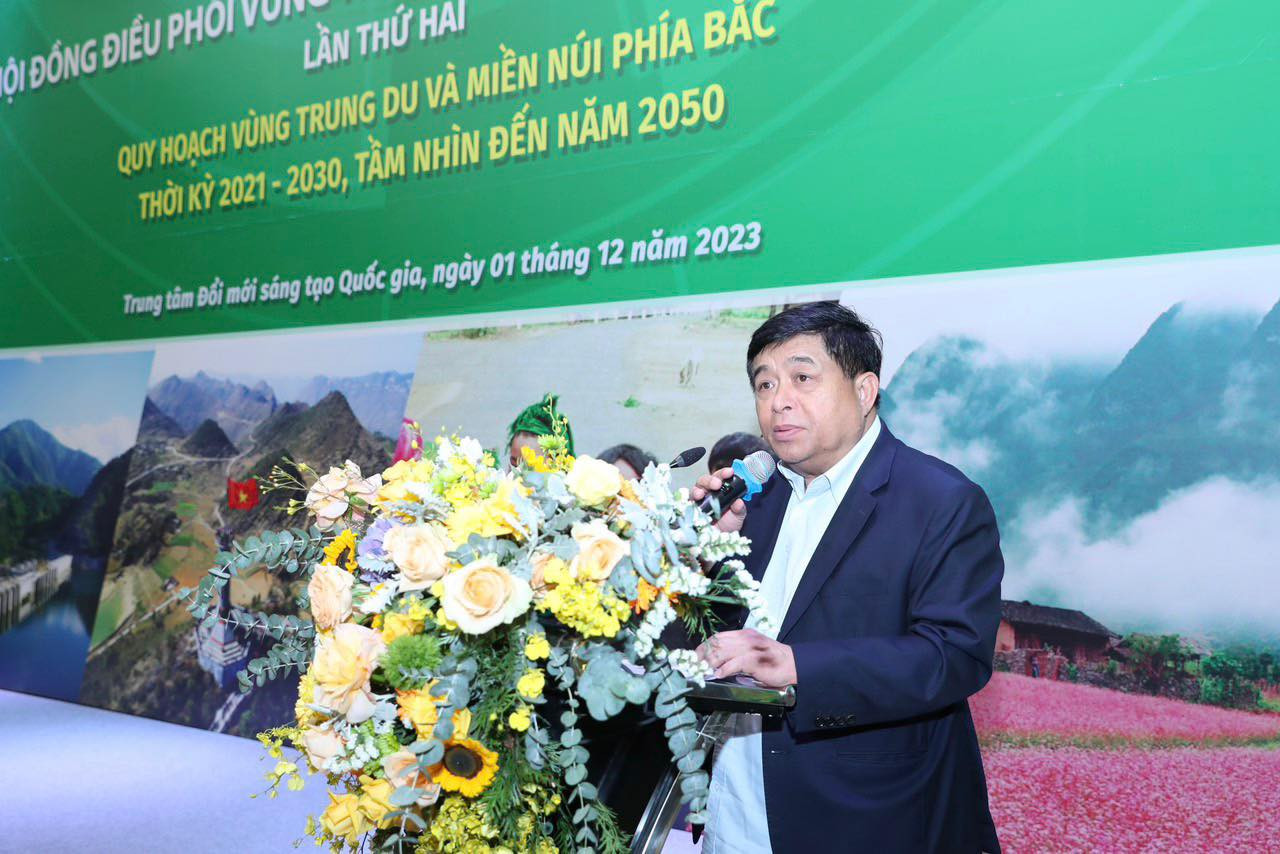
According to the Minister, the Northern Midlands and Mountains region is an area of special importance in terms of politics, economy, society, national defense and security, is the "fence" and northern gateway of the country and plays a decisive role in energy sources, water resources and ecological environment of the entire Northern region.
Localities in the region have increasingly recognized the role, position, importance and exploited the potential and advantages of the region. In particular, the importance of socio-economic infrastructure, especially transport infrastructure, has been identified to focus on investment, helping to significantly improve the connection between provinces in the region with the whole country and internationally.
The representative of the regional planning consultancy, EnCity International Consulting Joint Stock Company, has presented a number of general orientations in the planning work of the Northern Midlands and Mountains Region. In particular, the orientation of organizing development space includes 4 sub-regions - 6 economic corridors (4 main corridors, 2 secondary corridors) - 3 economic belts and a system of growth poles, centers associated with sub-regions and regions.
Specifically, sub-region 1 (the western sub-region including Dien Bien, Son La and Hoa Binh): Is a green growth area associated with sustainable agriculture, eco-tourism and clean energy with Hoa Binh as the growth pole and Son La as the center of agricultural processing and social services.
Sub-region 2 (Northwest sub-region including Lai Chau, Yen Bai, Phu Tho, Lao Cai, Tuyen Quang, Ha Giang): Is a large-scale tourist area, a hub for economic and cultural exchange with Yunnan and the southwestern provinces of China with two growth poles in Lao Cai and Phu Tho.
Sub-region 3 (Northeast sub-region including Thai Nguyen, Bac Kan, Cao Bang): Is the industrial, educational and medical center of the whole region, and is also a place to preserve history and origins with the potential to develop origin tourism.
Sub-region 4 (Eastern sub-region including Lang Son and Bac Giang): Is a place with great growth, the industrial center of the region, and has the most important international border gate with the role of connecting economic and cultural trade with Guangxi and the southern provinces of China.
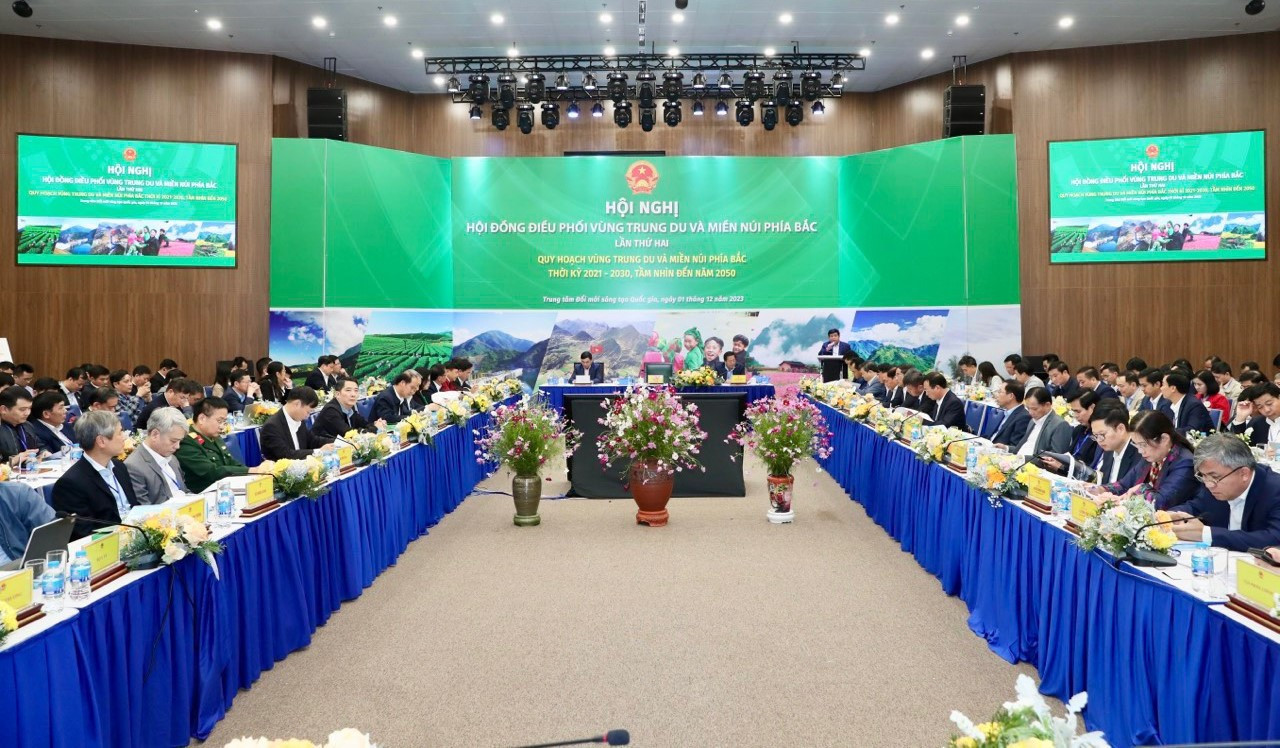
Regarding the planning orientation for infrastructure development, the consulting unit said that before 2030, priority will be given to investing in the construction of the North-South expressway, opening more access to the sea. Accordingly, investing in the North-South expressway connecting Hoa Binh - Thanh Hoa; National Highway 16 connecting with Thanh Hoa, North Central Coast.
In addition, priority will be given to upgrading and connecting Ring Road 1 (National Highway 4) and Ring Road 3 (National Highway 37) to speed up East-West connectivity, and upgrading and investing in Dien Bien, Lai Chau, Na San, and Sa Pa airports.
The planning consultant also proposed investing in an additional high-speed route (80 km/h) connecting Hoa Binh to Ninh Binh, just over 40 km long, to increase connectivity with North-South routes.
Many proposals on transport infrastructure
Commenting on the planning, Mr. Trinh Viet Hung, Chairman of Thai Nguyen Provincial People's Committee, suggested that if the implementation is to be organized, when approving, it is necessary to consider railway lines, roads, infrastructure systems, especially electricity.
Sharing the same view, Mr. Tran Huy Tuan, Chairman of Yen Bai Provincial People's Committee, said that to solve bottlenecks, infrastructure is a very big issue; in which horizontal connection is needed for regions.
Meanwhile, Mr. Ho Tien Thieu, Chairman of Lang Son Provincial People's Committee, said that the regional spatial connectivity organization plan mentioned the Chi Ma (Vietnam) - Ai Diem (China) border gate but did not raise the issue of upgrading it to an international border gate. However, the Prime Minister recently issued a decision on planning the border gates across the Vietnam - China land border, confirming that by 2030, 8 pairs of border gates will be upgraded to international border gates; including the Chi Ma - Ai Diem border gate. Therefore, the leader of Lang Son province proposed to supplement it correctly.
In addition, Mr. Thieu assessed that the vertical traffic connection is stable, but the horizontal connection is not stable. Therefore, Lang Son proposed a connecting route from Lang Son at the Huu Nghi international border gate to Thai Nguyen, Tuyen Quang and from Tuyen Quang to Yen Bai and the above provinces.
“These cross-highways are very important because Thai Nguyen, Bac Kan, and Tuyen Quang can easily reach the border gate, closer to Lao Cai; so they should be included in the planning.
Developing the railway line, Lang Son has the Hanoi - Dong Dang railway line. This issue has been discussed a lot, if we delay investing in this line, we will miss the opportunity. Therefore, it is recommended to adjust the planning so that this railway line can be implemented before 2030", Mr. Thieu proposed.
Nguyen Le
Source



![[Photo] "Ship graveyard" on Xuan Dai Bay](https://vphoto.vietnam.vn/thumb/1200x675/vietnam/resource/IMAGE/2025/11/08/1762577162805_ndo_br_tb5-jpg.webp)



![[Photo] Heavy damage after storm No. 13 in Song Cau ward, Dak Lak province](https://vphoto.vietnam.vn/thumb/1200x675/vietnam/resource/IMAGE/2025/11/08/1762574759594_img-0541-7441-jpg.webp)

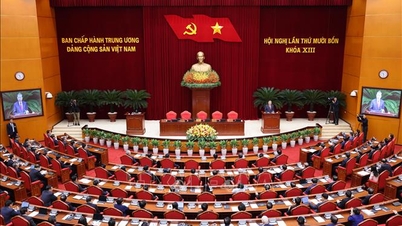



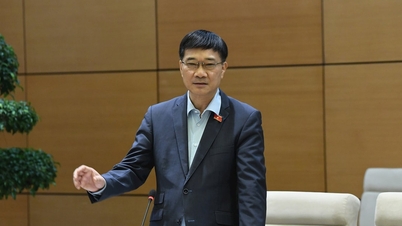

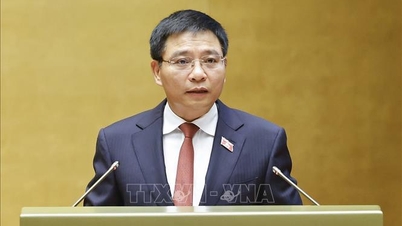
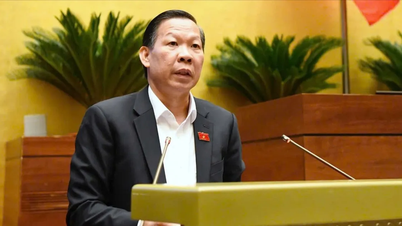

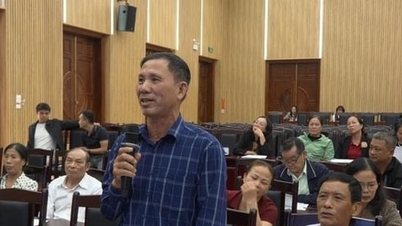



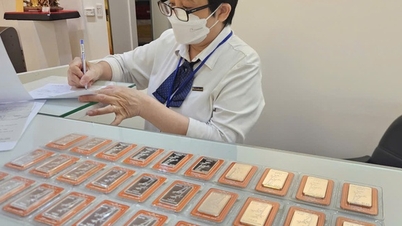













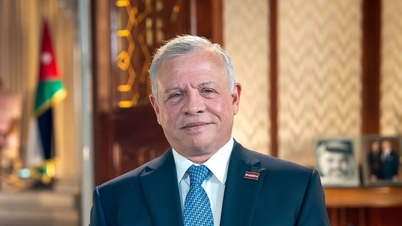
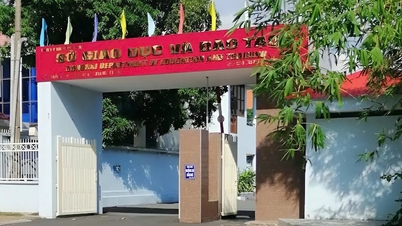




![[Video] Hue Monuments reopen to welcome visitors](https://vphoto.vietnam.vn/thumb/402x226/vietnam/resource/IMAGE/2025/11/05/1762301089171_dung01-05-43-09still013-jpg.webp)




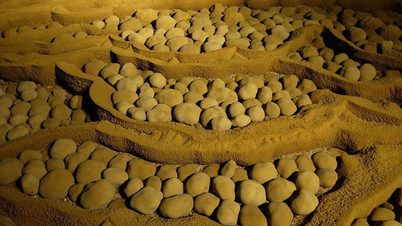



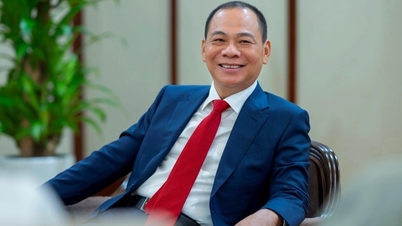






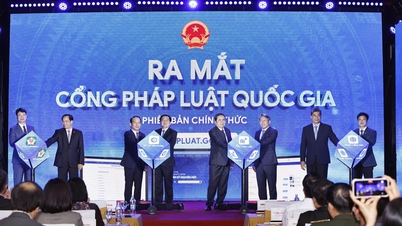





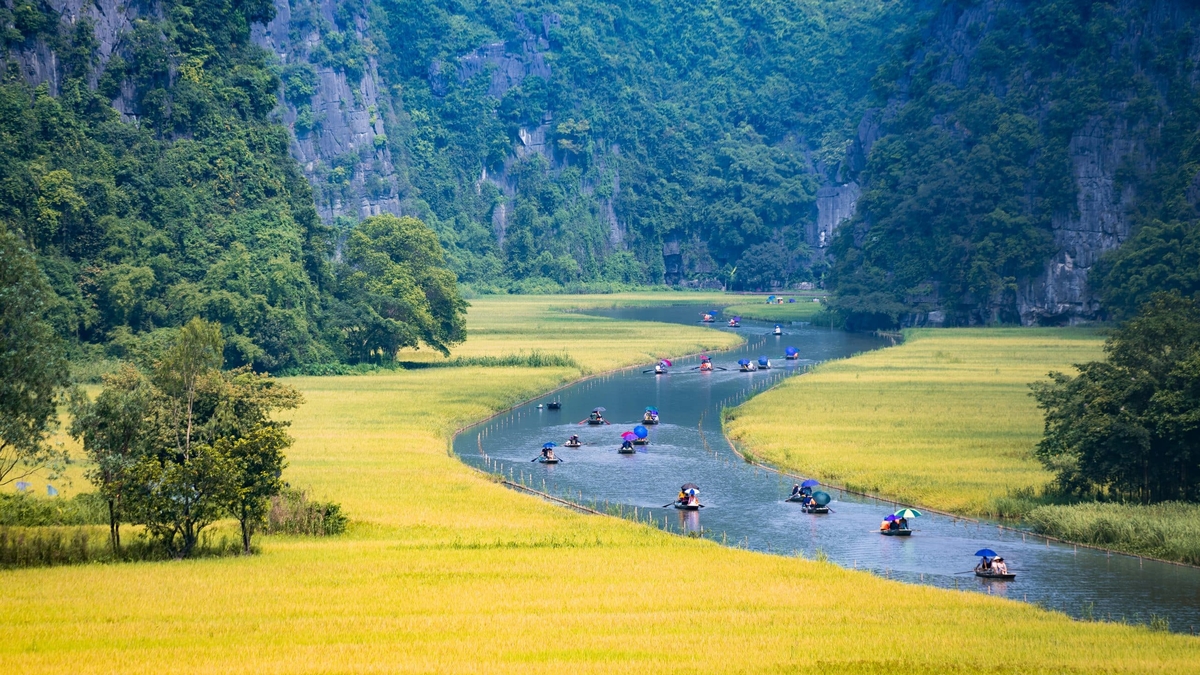







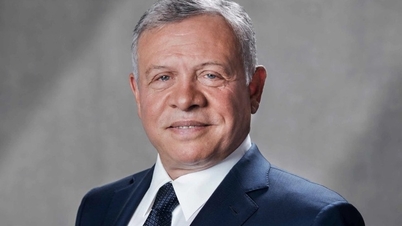
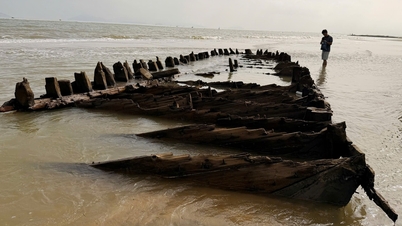
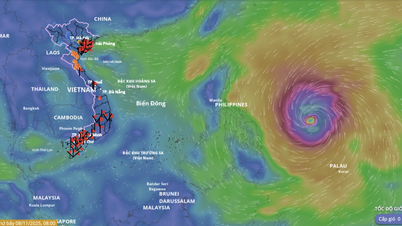
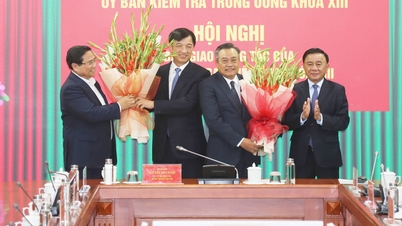

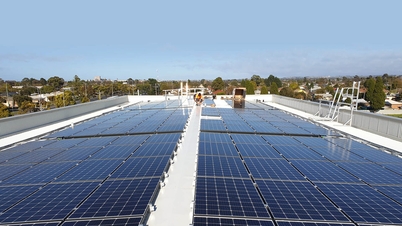



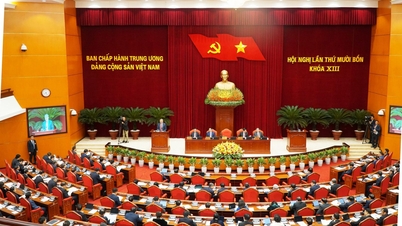






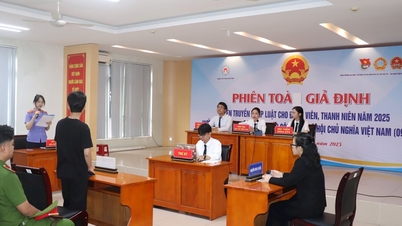





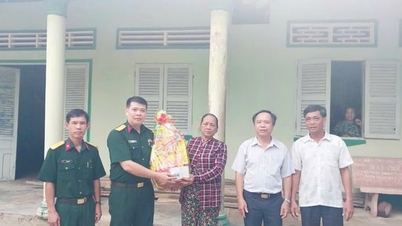


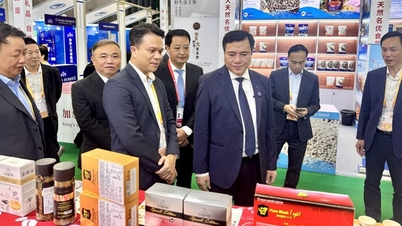












Comment (0)